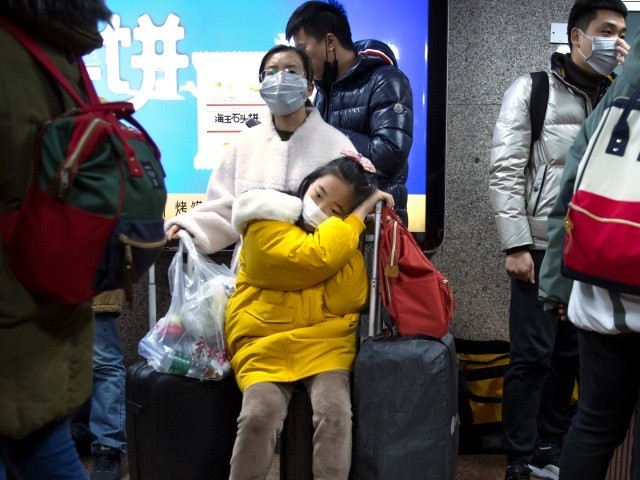A single traveler from China infected 39 people in Washington state with China’s coronavirus, according to virus expert Trevor Bedford.
“Thanks to sequencing by @UWVirology @CDCgov and @seattleflustudy we have genomes for 39 viruses sampled from WA,” he tweeted Tuesday. “Importantly 35 of these 39 viruses (90%) fall into a single genetic cluster indicating a single ~Jan introduction from China and subsequent local spread.”
Bedford runs a research laboratory Fred Hutchinson Cancer Research Center in Seattle.
His tweets show how similar mutations in China’s “#SARSCoV2 / #HCoV9 virus” — can be used to track the passage of a particular virus from one individual to others. The chart marks the original carrier and the subsequent victims in red.
Many overseas Chinese return home during China’s new year celebrations. In 2020, the celebrations ran from January 21 to February 20.
Many U.S. tech companies in the Seattle area employ many Chinese H-1B visa-workers or sponsor Chinese to become legal immigrants, even though many Americans also apply for jobs at the companies. By January 29, companies began asking their employees not to travel to China.
On January 31, the New England Journal of Medicine described the first Wuhan-disease carrier in the United States:
On January 19, 2020, a 35-year-old man presented to an urgent care clinic in Snohomish County, Washington, with a 4-day history of cough and subjective fever. On checking into the clinic, the patient put on a mask in the waiting room. After waiting approximately 20 minutes, he was taken into an examination room and underwent evaluation by a provider. He disclosed that he had returned to Washington State on January 15 after traveling to visit family in Wuhan, China. The patient stated that he had seen a health alert from the U.S. Centers for Disease Control and Prevention (CDC) about the novel coronavirus outbreak in China and, because of his symptoms and recent travel, decided to see a health care provider.
…
On hospital day 8 (illness day 12), the patient’s clinical condition improved. Supplemental oxygen was discontinued, and his oxygen saturation values improved to 94 to 96% while he was breathing ambient air. The previous bilateral lower-lobe rales were no longer present. His appetite improved, and he was asymptomatic aside from intermittent dry cough and rhinorrhea. As of January 30, 2020, the patient remains hospitalized. He is afebrile, and all symptoms have resolved with the exception of his cough, which is decreasing in severity.
The study does not identify the patient, but does provide a unique number to his coronavirus strain:
The full genome sequences from oropharyngeal and nasopharyngeal specimens were identical to one another and were nearly identical to other available 2019-nCoV sequences. There were only 3 nucleotides and 1 amino acid that differed at open reading frame 8 between this patient’s virus and the 2019-nCoV reference sequence (NC_045512.2). The sequence is available through GenBank (accession number MN985325).
Bedford’s analysis also shows how travelers from Iran and Italy brought infections to cities on the East Coast.
The evidence or infection from abroad comes as migration advocates seek to downplay the role of migration in spreading the disease.
Breitbart News reported March 16:
Immigration advocates are worrying out loud that China’s Wuhan epidemic will reduce public support for migration into the United States.
“The Coronavirus Is Killing Globalization as We Know It,” says a headline at ForeignPolicy.com by Phillippe Legrain, a self-described “cosmopolitan” supporter of migration, and an aide to left-wing European politicians.

COMMENTS
Please let us know if you're having issues with commenting.